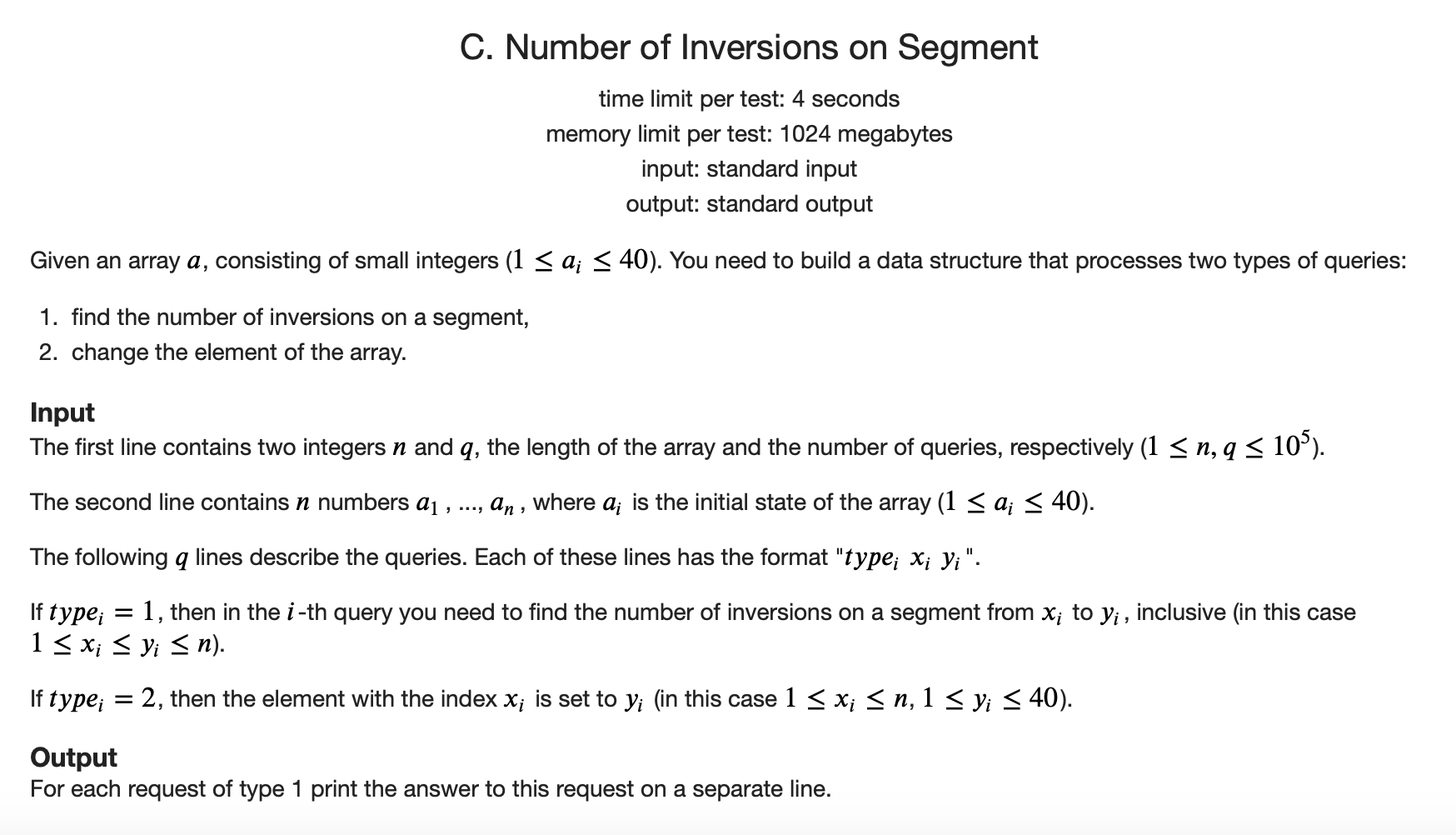I was trying to do this question and I get TLE on one the test cases (the actual link to the question will ask you to login) .
.
What is an inversion?
An inversion of an element is the number of elements to the left which are greater. Sum of number of numbers throughout a segment is the answer.
It is based on Segment Trees.
My attempt is this:
#include <bits/stdc++.h>
#define ll long long
using namespace std;
struct segtree {
int size;
vector<int> sums;
void init(int n){
size=1;
while(size<n)
size*=2;
sums.assign(2*size,0);
}
void change(int i,int v,int x,int lx,int rx){
if(rx-lx==1){sums[x]+=v;return;}
int m=(lx+rx)/2;
if(i<m)
change(i,v,2*x+1,lx,m);
else
change(i,v,2*x+2,m,rx);
sums[x]= sums[2*x+1] + sums[2*x+2];
}
void change(int i,int v){
change(i,v,0,0,size);
}
int calc(int l,int r,int x,int lx, int rx){
if(lx>=l&&rx<=r) return sums[x];
if(rx<=l||lx>=r) return 0;
int m =(lx+rx)/2;
return calc(l,r,2*x+1,lx,m) + calc(l,r,2*x+2,m,rx);
}
int calc(int l){
return calc(l,size,0,0,size);
}
};
int main(){
int n, m;
cin >> n >> m;
vector<int> a(n);
for(int i=0;i<n;++i)
cin >> a[i];
while(m--) {
int op;
cin >> op;
if(op == 1){
int x, y;
cin >> x >> y;
x-=1;
segtree st;
st.init(40);
int sum = 0;
for(int i=x;i<y;++i){
int val = a[i];
sum += st.calc(val);
st.change(val-1, 1);
}
cout << sum << "\n";
} else {
int x, y;
cin >> x >> y;
a[x-1]=y;
}
}
return 0;
}
I wanna know a better time complexity version of the program.
